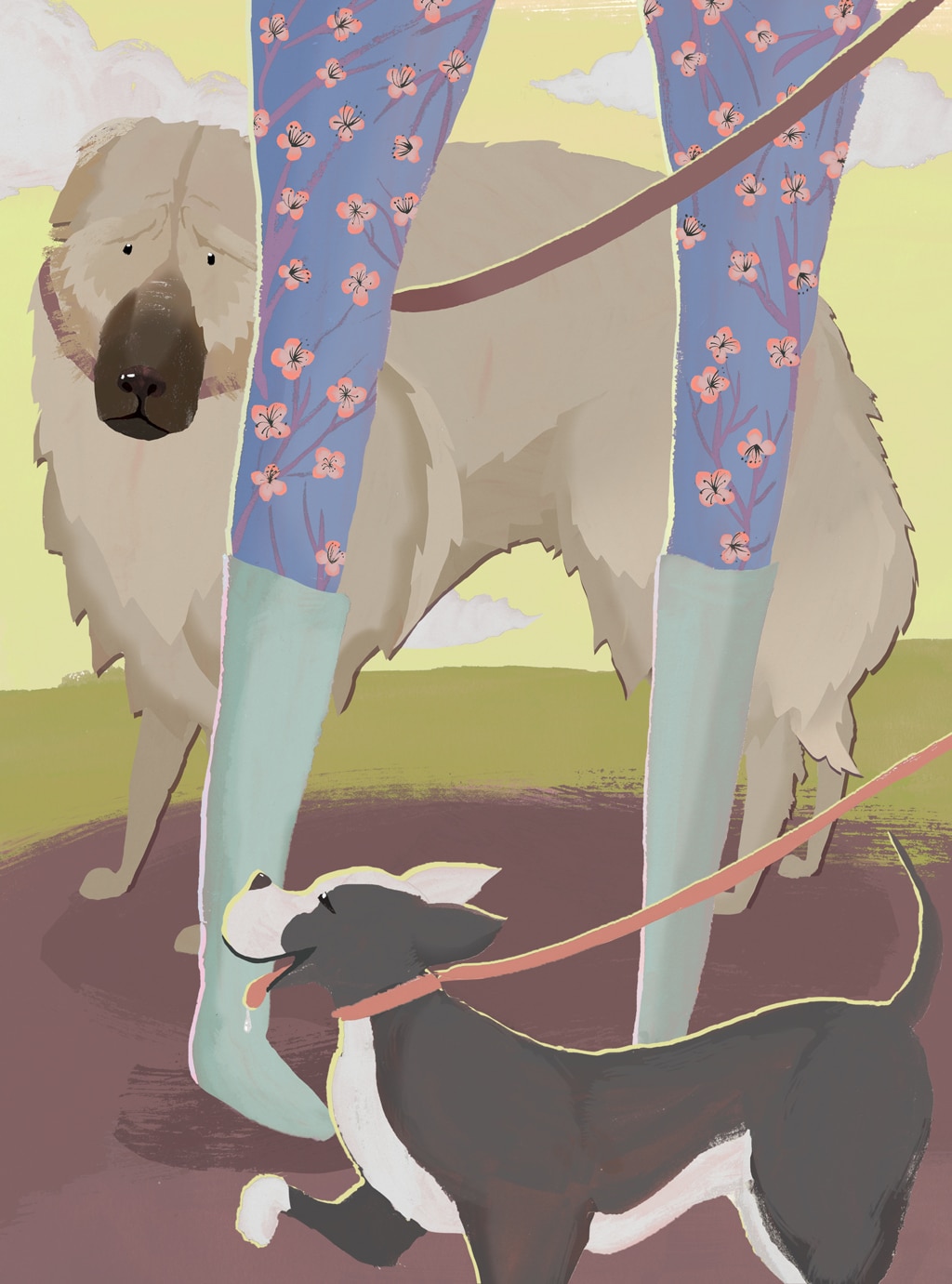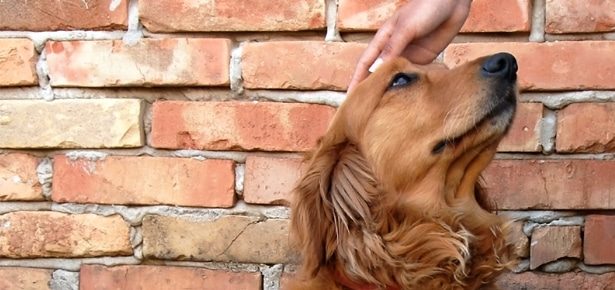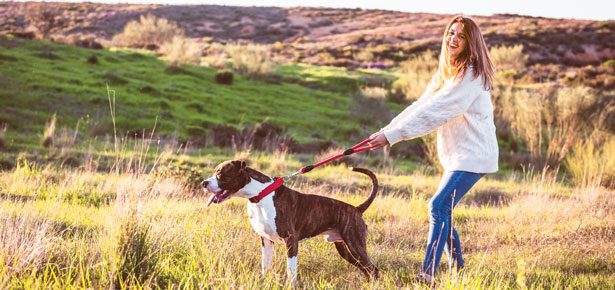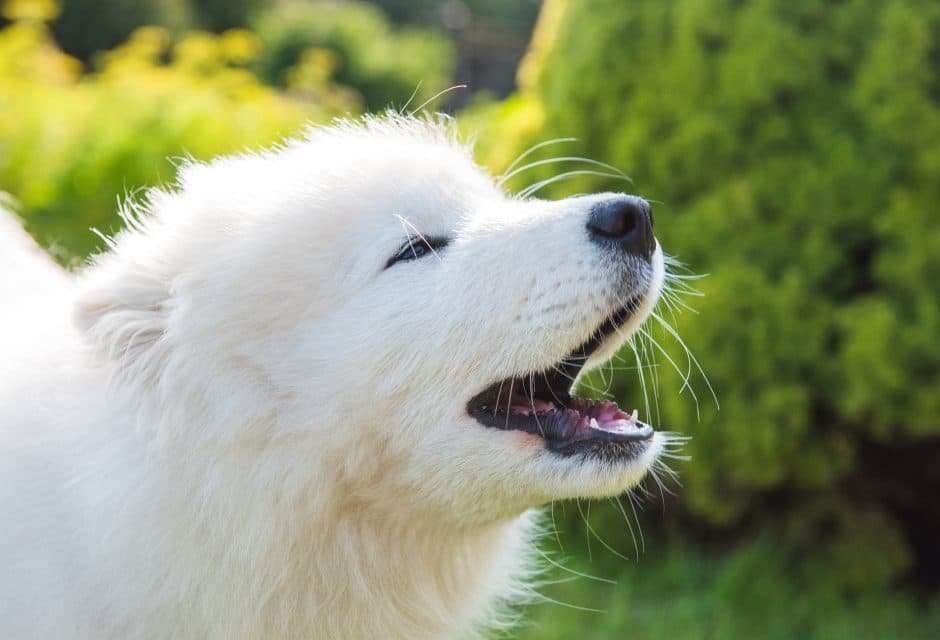

Tips & Tricks to Help Shy Dogs Come out of Their Shell
Training your dog to be less timid
How to build confidence in a timid, shy dog! Tied outside the entrance of a café, the young Border Collie-mix paced and panted. An approaching couple, assuming that a dog tethered outside of a café would be friendly, moved toward him to say hello. But before they could get within five feet, he erupted into a frenzy of barks and shrieks and then urinated. The dog’s person rushed out, coffee in hand. “Sorry—he’s a bit shy,” she said, the dog cowering into her. Untying the dog, she quickly led him away down the street.
For a “normal” dog, this would have been a welcome encounter. But for a chronically shy dog, something as simple as a casual hello from a stranger can be a terrifying experience. It goes without saying that this timid dog should never have been left out there alone, waiting to fail.
This example is an extreme case of caninie shyness (extreme shyness can look like aggression), but there’s a whole spectrum of timidity. Read on to determine if your dog is shy and how you can use confidence boosting training exercises to help them feel at ease.

Illustration by Kara Pyle
Is Your Dog Shy? Signs of Shyness
Typically, a dog’s behaviour and body posture will alert you to know if they are timid. A shy dog might exhibit any or all of the following:
- Ears flattened back to the head
- Cowering posture
- Shying away from interactions with other dogs and/or people
- Tail tucked between the legs
- Panting or shaking
- Dilated, glassy eyes
- Skulking, pacing, hiding, or escaping
- Whining or barking
- Raised hackles
- Fear of eye contact
- Sneering, nipping, or biting
- Submissive urination
Some shy dogs exhibit shy behaviour only toward people, while others show it only toward dogs. Many, though, will display the behavior toward both, or even in stressful situations that don’t involve a person or dog. Thunder, fireworks, traffic, or any unpredictable circumstance can trigger a shy dog into a state of panic.
Why are Dogs Shy?
Causes of chronic timidity in dogs are numerous, and include one or more of the following:
- Hereditary predisposition
- Improper socialization during the first eight weeks of life
- Traumatic occurrence during the first “fear imprint” stage, from 8–11 weeks
- Chronic abuse
- Injury or attack
- Medical issues, including hearing loss, thyroid imbalance, epilepsy, or chronic pain
- Rescue dogs in particular can suffer from shyness, due not only to trauma associated with being in a noisy shelter with many unknown dogs, but from the abrupt (and often serial) termination of comforting relationships with an adoptive family. When a dog is abruptly denied the comfort of a reliable, loving situation, and deprived of any dependable routine, he can develop anti-social tendencies.
Don’t!
There are certain situations and actions you should attempt to avoid with your timid, fearful dog. They include:
- Tethering your dog outside an establishment such as a café, store, or library while you go inside. People coming and going will try to pet them; this will reinforce her fears, and perhaps cause a biting incident.
- Forcing your shy dog into a fearful situation, thinking it’s a “sink-or-swim” solution. It will only make things worse!
- Telling friends and strangers to make eye contact with your pet and to reach out to greet them. Instead, let your dog initiate the greeting.
- Having large, boisterous groups in the home. Putting the dog into a room or a crate will make matters worse, because they can still hear the noise, but not go anywhere to avoid it. Only use the crate or room if it is located far enough away for them to not hear the stimulus. The hectic activity of children should particularly be avoided.
- Overbearing dog training styles.
- Forcing a shy, hiding dog out from under tables, sofas or chairs when scared. Instead, let them come out of her own accord. If you must get your dog out, keep a leash on them in the home and use it to coax them out. Then have them sit for a treat.
- Taking them into chaotic urban environs or areas with unpredictable activity, such as a skateboard park or a fireworks display. Instead, always think ahead, and choose venues you know won’t panic your dog.
How to Help a Bashful Dog Enjoy the Finer Things in Life:
Easing a Shy Dog’s Worries Via Confidence Building Exercises
Though you may not be able to turn a shy dog into a socialite, there are techniques you can use to ease the stress and raise a timid pooch’s confidence. These include:
Obedience training
A shy dog that knows exactly what you are asking of her will be less likely to panic. It’s essential to teach your timid dog the basic commands, especially “Sit,” “Stay,” and “Come.” Never use an overbearing, intimidating style, and avoid yelling or undo emotion. Stay calm and supportive, but avoid coddling and over-the-top, exaggerated praise. Treats and toys are helpful tools to keep their mood upbeat during training. Begin teaching all new behaviours in a quiet indoor spot with no distractions. Then, over time, gradually introduce distractions, such as a friend reading a newspaper, a football game on the television, or kids playing outside a window. Eventually take the obedience outside. If your shy dog is liable to run off when scared, keep a leash on them.
Doggie Mentors
Professional trainers often enlist the help of a confident, laid back canine helper. When a timid dog sees the confident helper dog playing, sitting for treats, and enjoying herself, he will often relax and join in on the fun. If your shy dog has a doggie friend she knows and trusts, by all means, use that “mentor dog” to help in the training and socialization process. If your timid dog doesn’t like other canines, try including a person they trust.
Subtle Socialization
Nervous dogs often don’t respond well to the standard socialization techniques that other dogs do. Busy parks, streets or active homes can send them into a panic and make the problem worse. Instead, be subtle. Have a friend sit quietly in the same room as the dog and randomly drop treats onto the floor. No eye contact or communication; just treats. Over time, this will get your shy dog to associate that person with something good. Once they trusts that person enough to regularly take the treats, continue with the person standing. Then move the venue to another room, or into the yard. Slowly, you’ll relax the dog enough so that the friend can go with you on walks and even take the leash. Repeat this with other friends until your dog has a small cadre of trusty human pals.
Game time!
Worried dogs have a hard time enjoying life. To break the worry cycle, teach your dog to play games such as “Fetch” or “Hide-and-Seek.” Your dog will relax and simply be a dog for a while. If she has a dog friend, include him or her in the fun. Schedule at least three play sessions each day. If you can, change up the venue, so that eventually they will feel comfortable playing within sight of strangers or unpredictable activity.
Timid dogs have a “worry radius” that is fairly predictable; as long as something or someone stays outside this distance, the dog is usually fine. If you can, try to reduce this distance ever so slowly, over time, while playing games. After several months, you should be able to play games within plain sight of activity. (Keep a leash on your dog if the area is unfenced.)
Trick and Treat
Teaching tricks to your shy dog will help their focus and stay out of “worry” mode. And, they teach them positive cause and effect—if they performs the trick, they get a treat. It may sound simplistic, but, for a nervous dog, just learning that they can initiate a reliable, predictable interaction can be a great comfort. Try these great homemade dogs treats recipes!
Any tricks will work. “Shake,” “Spin,” “Roll over”—whatever you think your dog can master is good.
Exercise
A tired dog is less apt to worry than one that has pent up energy. To that end, try to get your dog as much exercise as possible on a daily basis. Go for walks in areas where their not apt to panic. Jog or bike with him. Play fetch or Frisbee—whatever gets him tired will calm him and keep his mind off of worries. (Ever been so ridiculously overtired on a long-haul flight that you didn’t fret the turbulence as you normally would? Same principle. It’s remarkably effective.)
Directed Walks
If your shy dog fears other dogs, the normal canine greeting procedure—a nose-to-nose, nose-to tail, play-posturing ritual—should be replaced with a technique called the “directed walk.” Instead of letting the leashed dogs greet, simply walk them briskly, with as much space between each dog as needed to prevent your own shy dog from panicking. Walk them quickly, right at your dog’s “worry radius,” and don’t allow contact. It should be a no-nonsense, directed walk, as if you are all on a mission. Keeping them moving!
After a few minutes, have each sit about ten to fifteen feet apart, and reward. Then move on, and repeat. Over time (days if need be), reduce the “worry radius” incrementally, but don’t feel obliged to have the dogs greet each other unless it’s completely obvious from their body postures that they want to. The idea is to get your timid dog to think there is something important going on that takes precedent over her fears. This “teaming” drill is a vital tool in conditioning her to like other dogs.
Desensitizing
By pairing a marvelous experience with a worrisome one, you can slowly desensitize your timid dog to stimuli that cause their worry. For instance, if they fear the sound of a vacuum, try this: record the sound of the vacuum on your cell phone. Then, with the volume set down to barely audible, have them sit then give your dog a treat while simultaneously playing the audio. If necessary, have a partner operate the audio from a distance while you work with your dog. Over a few days, increase the volume while treating. Also, try playing her favourite games while the audio plays. The trick is to increase the volume slowly, over time, and to never reward the dog when she reacts poorly to the sound. These “counter-conditioning” drills should over time get them to actually look forward to the sounds, because they signal a payday.
Scent Work
Teaching your timid dog to find scent-rich items hidden around the home is a great way to get her mind off of their troubles and build them confidence. Start off by hiding a treat in plain sight then telling them to “Find-it!” Lead them to it if need be then praise and say “Good Find-it!” As they improves, make them harder to find. Use different treats and other scent-rich items, such as another dog’s hair, a feather, or even a slip of paper with some lavender oil on it. Success will boost her confidence!
Routine and Trigger Reduction
Most importantly, reduce the possibility of failure by setting your dog up for success. Maintain a predictable routine for your shy dog and keep the home as free from triggers as possible. Desensitize very, very slowly, as you gradually expand them pack to include select trusted humans and dogs. Once you realize that you are managing a personality disorder more than curing a bad behaviour, you and your shy dog will make great strides towards minimizing her fears so she can enjoy life.
Join the newsletter and never miss out on dog content again!
"*" indicates required fields
By clicking the arrow, you agree to our web Terms of Use and Privacy & Cookie Policy. Easy unsubscribe links are provided in every email.





